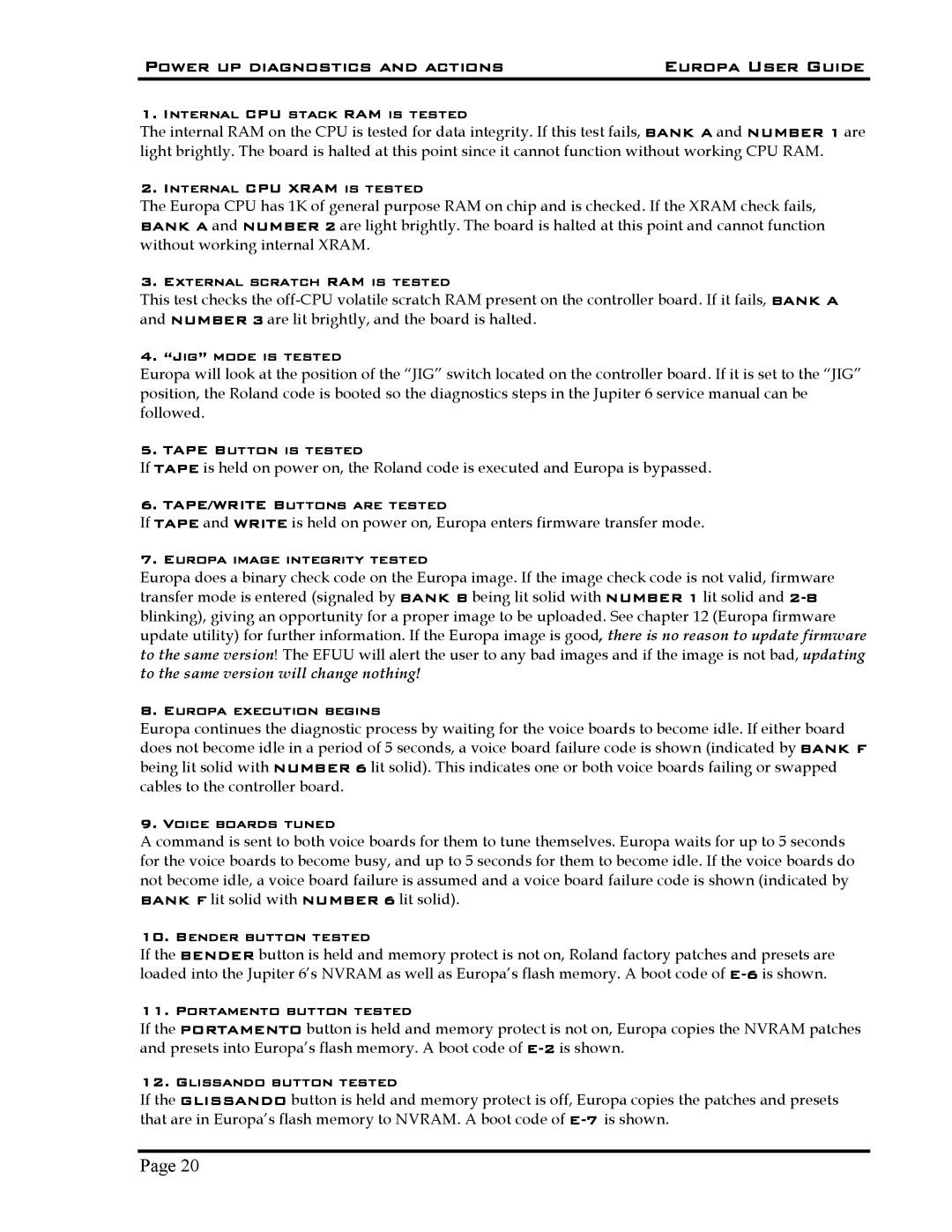Power up diagnostics and actions | Europa User Guide |
1. Internal CPU stack RAM is tested
The internal RAM on the CPU is tested for data integrity. If this test fails, BANK A and NUMBER 1 are light brightly. The board is halted at this point since it cannot function without working CPU RAM.
2. Internal CPU XRAM is tested
The Europa CPU has 1K of general purpose RAM on chip and is checked. If the XRAM check fails, BANK A and NUMBER 2 are light brightly. The board is halted at this point and cannot function without working internal XRAM.
3. External scratch RAM is tested
This test checks the
4. “Jig” mode is tested
Europa will look at the position of the “JIG” switch located on the controller board. If it is set to the “JIG” position, the Roland code is booted so the diagnostics steps in the Jupiter 6 service manual can be followed.
5. TAPE Button is tested
If TAPE is held on power on, the Roland code is executed and Europa is bypassed.
6. TAPE/WRITE Buttons are tested
If TAPE and WRITE is held on power on, Europa enters firmware transfer mode.
7. Europa image integrity tested
Europa does a binary check code on the Europa image. If the image check code is not valid, firmware transfer mode is entered (signaled by BANK B being lit solid with NUMBER 1 lit solid and
8. Europa execution begins
Europa continues the diagnostic process by waiting for the voice boards to become idle. If either board does not become idle in a period of 5 seconds, a voice board failure code is shown (indicated by BANK F being lit solid with NUMBER 6 lit solid). This indicates one or both voice boards failing or swapped cables to the controller board.
9. Voice boards tuned
A command is sent to both voice boards for them to tune themselves. Europa waits for up to 5 seconds for the voice boards to become busy, and up to 5 seconds for them to become idle. If the voice boards do not become idle, a voice board failure is assumed and a voice board failure code is shown (indicated by BANK F lit solid with NUMBER 6 lit solid).
10. Bender button tested
If the BENDER button is held and memory protect is not on, Roland factory patches and presets are loaded into the Jupiter 6’s NVRAM as well as Europa’s flash memory. A boot code of
11. Portamento button tested
If the PORTAMENTO button is held and memory protect is not on, Europa copies the NVRAM patches and presets into Europa’s flash memory. A boot code of
12. Glissando button tested
If the GLISSANDO button is held and memory protect is off, Europa copies the patches and presets that are in Europa’s flash memory to NVRAM. A boot code of
Page 20
